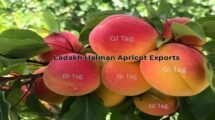Godrej Agrovet plans to venture into oil palm and plant up to one lakh hectares (lh)
Following the Centre’s recent policy announcement, Godrej Agrovet Ltd (GAVL), a diversified agriculture player, is contemplating a substantial growth in oil palm. In the next five to six years, the corporation plans to plant up to one lakh hectares (lh) of oil palm. Godrej currently works with farmers in Andhra Pradesh, Telangana, and Tamil Nadu, where it has over 65,000 hectares of oil palm plantations.
According to Balram Singh Yadav, CEO of Godrej Agrovet, ‘we can bring around one lh under oil palm over the next five years if the new policy is implemented lock, stock, and barrel.’
The Centre authorised a National Mission on Edible Oils – Oil Palm worth ₹ 11,040 crore on Wednesday to reduce imports by promoting the crop in 6.5 lakh hectares and increase crude palm oil (CPO) output to 11.20 lakh tonnes by 2025-26. In addition to incentivizing inputs and planting material, the programme provides price security to farmers through viability gap funding.
Also Read: Imports of edible oil fell by 20% in June, owing to increased inventory in the country
Transparency
According to Yadav, the new policy has provided some pricing predictability and the formula is transparent. ‘The Centre has completed its mission. Now is the time for the United States to join in to help enable growth,’ he continued.
There is a long line of farmers who want to switch to oil palm because of the high returns it has earned this year due to the increase in oil prices, Yadav mentioned.
Godrej Agrovet will also increase its oil milling capacity, but he said it is too early to quantify the investments. The company operates three processing mills in Andhra Pradesh, one in Tamil Nadu, one in Goa, and one in Mizoram, with a total processing capacity of 3,000 tonnes per hour.
‘During the four-month season, our capacity utilisation is around 80%,’ Yadav said, adding that the company has plant capacity for the next three years. Last year, the company produced approximately 1.1 lakh tonnes of crude palm oil, which it sold to refiners.
The company is also interested in acquiring land in the Andaman Islands and the Mizoram. ‘We would have surveyed more states in a year. With these kinds of benefits, a lot of states will jump on board. I am confident that Assam and Meghalaya will take this up vigorously,’ Yadav said.
According to Yadav, ‘Andaman is the best place for oil palm cultivation because of heavy rains, the soils are very fertile, and the temperature is similar to that of Indonesia and Malaysia.’
Also Read: Union Cabinet approved NMEO-OP scheme with a budget of ₹ 11,040cr
Carbon-Neutral Business
Concerning the environmental implications, Yadav stated that in India, oil palm is a carbon-positive business, as opposed to Indonesia and Malaysia, where forests are cleared, killing flora and fauna in order to plant oil palm trees. ‘In India, we are converting paddy fields into oil palm plantations. Crop diversification is also taking place. Because of monoculture, soils are depleted. It is carbon positive and environmentally friendly. Can you imagine having 150 trees instead of none on one hectare of oil palm?’ he asked.
Is there a lot of water?
Although oil palm is a water-intensive crop, Yadav believes drip irrigation is changing the game. ‘There is an attractive subsidy for drip irrigation, and about 80-90% of our plantations have drip irrigation, and water usage is very prudent. In comparison to paddy and sugarcane, oil palm requires less water,’ he said.
While official estimates show that oil palm is grown in approximately 3.5 lh, he claims that the actual area is around 2.5 lh due to farmer uprooting. The country’s palm oil production is estimated to be 4 lakh tonnes.
When compared to Indonesia and Malaysia, production costs in India are higher due to lower productivity and oil recovery, primarily due to temperature and rainfall conditions, according to Yadav.
For a seven-year plantation in India, the average yield of fresh fruit bunches is 16-17 tonnes per hectare, whereas it is 24-25 tonnes in Malaysia and Indonesia. The oil recovery rate in India is 17.5%, while it is 19-19.5% in Malaysia and Indonesia.
The higher recovery in Malaysia and Indonesia is due to the plantations being over ten years old and the majority of the plantations being owned by companies rather than contract farming. ‘As a result, the companies are able to adhere to strict management practises that are difficult for our farmers to adhere to,’ he explained.
Also Read: Edible oils imports dropped by 27% in Feb 2021 due to excessive imports and higher prices
Contract farming is used to grow oil palm in India, with a three-way agreement between the farmer, the miller, and the state. Prior to decontrol, the Oil Palm Act mandates a command area system that allows growers from a specific area to supply to a designated miller, as in the case of the sugar industry.


















Add Comment